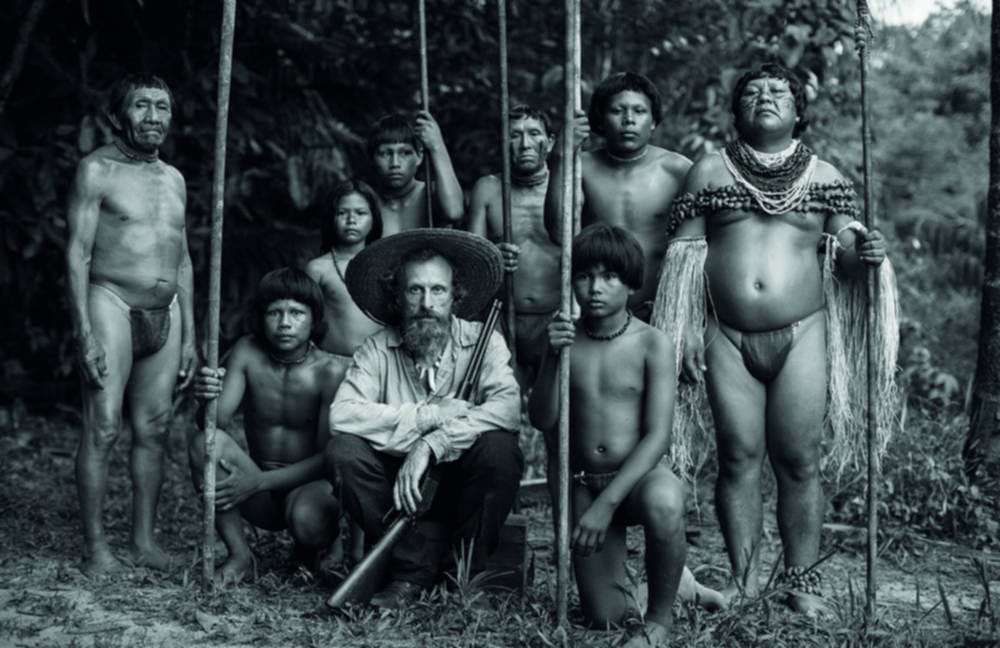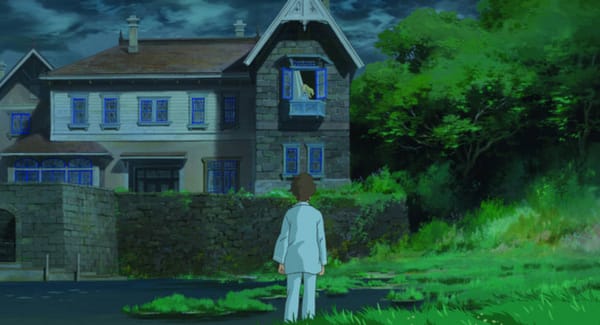Embracing the depths of humanity
Embrace of the Serpent is a hallucinatory journey into the psyche of the Amazon

Much like the braying politicians slugging it out over the Brexit debate currently raging, many films currently being released can be divided into two distinct camps: there are those that exploit the inherently visual nature of cinema, to create works that are visually astonishing, while perhaps lacking in terms of plot and pacing – call them ‘team look’. And there are those that craft an engaging narrative, chock full of delicious, naturalistic dialogue (or not. Looking at you, Sorkin!) and a plot that grabs the viewer, but an absence of aesthetic flourish – call them ‘team plot’. But there are those rare films that manage to combine both worlds, resulting in a finished product that speaks to the viewer on a number of different levels: visually, culturally, intellectually, and personally. Embrace of the Serpent is such a film.
Loosely based around the journals of German ethnologist Theodor Koch-Grünberg and American ethnobotanist Richard Evans Schultes, Embrace of the Serpent sees the intertwining of two plotlines: in 1909, Theo (Jan Bijvoet) is terminally ill, and is combing the Amazon rainforest to try and find the yakruna, a sacred plant that will cure him; in 1940, Evan (Brionne Davis) is researching plants in the same area, and also trying to find the yakruna, which possesses both hallucinogenic properties, and the ability to increase the output of rubber trees on which it is grown. Their stories are connected by Karamakate, a mystic shaman, and the last of his tribe, who guides both men through the forest. Just as the Westerners are searching for their plant, Karamakate is also searching – initially for members of his tribe, but later on for mere memories of them. The themes of memory and rebirth feature heavily in the film, as the main principles cycle around each other, tracing and retracing familiar paths.
The fact that the actor playing the older Karamakate, Antonio Bolívar Salvador, is himself one of the last of the Ocaina people only adds emotional heft to what is already an incredibly charged film. Embrace of the Serpent looks at the devastation Western colonialism can wrought on an area: the repeated references to the rubber farms, the slaves tortured by plantation owners, the brutality of the leaders of the Christian missions, the hysteria induced by mystic cults, which rushed in to fill the gap left by the destruction of the indigenous religious. It all speaks to the vast, indelible legacy left behind by colonialism, which Frantz Fanon incisively referred to as ‘germs of rot’, infecting both the minds of the people and the very land itself.
The land, the particular nuances and idiosyncrasies of the Amazon basin, form another key player in the film. Its title is taken from an Amazonian myth, which states that ancestral beings were brought to Earth on a giant anaconda, and went into the Amazon to teach humans how to live in harmony with nature; the body of the anaconda became the Amazon river, whose torturous paths cradle indigenous communities. The two stories take place more than three decades apart, but all that has really changed is reflected in the jungle’s human inhabitants; we can see the passing of time in the lines on Karamakate’s face, and the decay wrought on the Christian mission’s buildings, but the jungle remains the same, unaffected by age, isolated from regular temporal progression.
Embrace of the Serpent raises questions, therefore, not only of the politics of power, and Western colonisation, but also metaphysical ones on the nature of reality – the heavy emphasis on the centrality of hallucinogenic plants to indigenous culture is a reflection of a different train of philosophical thought, one that embraces the phenomenologist emphasis on consciousness and appearance.
The film's director Ciro Guerra (astonishingly, Embrace of the Serpent is only his third full feature film) handles such narrative complexities with extreme grace, and simultaneously manages to craft one of the most visually astonishing films in recent memory. Nearly the entire film is shot in a brilliantly crisp black and white, which reflects the anthropological photographs taken by explorers during the era, several of which appear during the film’s credits.
In many ways, the closest comparison the film evokes for me is the work of Sebastião Salgado, the Brazilian photographer whose work is a reflection on the epic and the sublime power both of nature and of humanity. Cinematography David Gallego, who like Guerra, only has a handful of credits to his name, has rendered the Amazon in exacting style, and the result is a masterwork of visual force.
Embrace of the Serpent is that rare beast: a film that manages to exploit the formidable ability the camera has to tell a story and raise questions, while still managing to be a wholly beautiful work. Guerra takes us on a hallucinatory journey into the deepest part of the jungle, forcing us to confront the very nature of power and humanity. Embrace of the Serpent is a film that leaves us humbled, nourished, and sublimely, wonderfully, wholly enriched.









